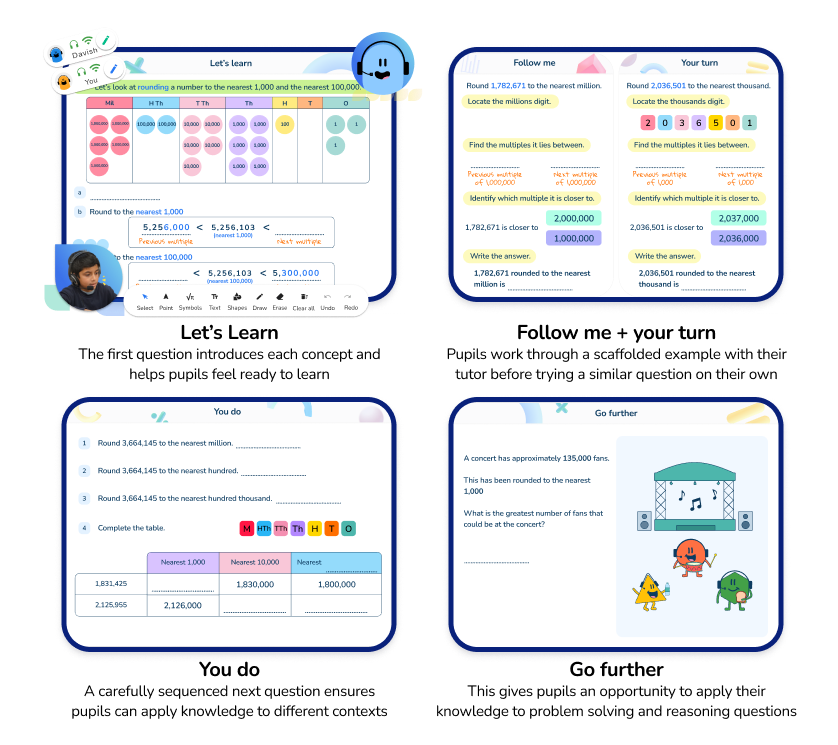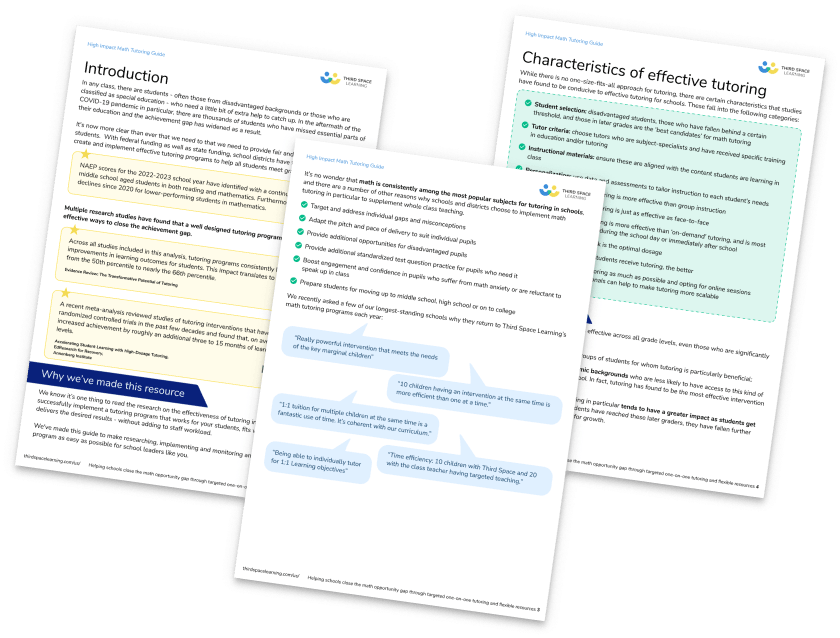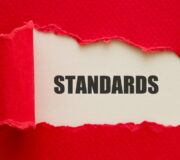Teacher Observation: Tips To Ace Observations For Teachers, Observers And Administrators
Teacher observations are integral to great teaching. They facilitate self-reflection on teaching practices and, when used effectively, can foster a culture of collaboration and continuous improvement within the school.
In this article, we explore teacher observations: what they are, why they are important, and how to make the most of them.
What is teacher observation?
Teacher observation is the process where an observer, typically an administrator, supervisor, or colleague, observes a teacher’s classroom instruction, student interactions, and overall teaching practices.
School districts have district-approved evaluation tools (rubric) for teacher observations. The observation process aims to provide constructive feedback to help teachers enhance their teaching skills and improve their student learning outcomes.
Teachers can also observe each other. Teacher-to-teacher classroom observations are non-evaluative. Teachers observing one another promotes continuous growth and improvement, ultimately benefiting both the teachers and the students.
Teacher observation is an opportunity for:
- Professional development
- Collaboration
- Reflection
- Peer Learning
- Building community
27 tips for teacher observations
Top tips to help teachers and administrators make the most of announced and unannounced teacher observations. Includes preparation tips for teachers, teacher-to-teacher observations and tips for administrators observing lessons.
Download Free Now!What is the purpose of teacher observation?
Administrator or supervisor teacher observations intend to provide useful feedback to teachers to strengthen overall pedagogy, including:
- Lesson planning: Observations help to determine if the teacher understands how to plan meaningful instruction aligned with state standards.
- Assessment of teaching: Observations evaluate the instructional strategies and classroom management techniques facilitated during the lesson.
- Student achievement: Observations contributed to closing the achievement gap by promoting highly effective instructional strategies and creating a positive learning environment.
- Learning environment: Observations help to determine that the learning environment is safe, supportive, and inclusive.
Types of teacher observation
Teacher observations do not always look the same. Observations are either announced or unannounced. Observers may stay for an entire lesson, a short learning episode, or a quick snapshot. Here are some of the main types of teacher observation:
- Announced observation: Teachers knows the exact observation day and class. Typically, the administrator or supervisor conducts a pre-conference with the teacher before the observation to discuss the learning goals of the observed lesson and planned teaching strategies.
- Unannounced observation: The teacher does not know the exact observation day or class.
- Classroom walk-throughs: This is when administrators and/or supervisors observe a portion of the lesson for 5-10 minutes. In this context, the administrator/supervisor is usually collecting informal data on teaching and learning for a particular aspect of teaching, such as student engagement.

Meet Skye, the voice-based AI tutor making math success possible for every student.
Built by teachers and math experts, Skye uses the same pedagogy, curriculum and lesson structure as our traditional tutoring.
But, with more flexibility and a low cost, schools can scale online math tutoring to support every student who needs it.
Find out moreSummative teacher evaluation
A teacher’s summative evaluation may include any teacher observations.
Teachers receive a composite score that score varies depending on the grade level that the teacher instructs. The criteria for the composite score of a high school teacher might be a bit different than the criteria for the composite score of a first-grade teacher.
Typically, the criteria include formal classroom observations, student academic growth based on formative and summative assessments, and state assessments. The composite score is based on a summative rating of 1-4 with 1 being ineffective and 4 being highly effective.
What is the process for teacher observation?
The process for teacher observation depends on the type of teacher observation. Most notably whether observations are announced or unannounced. Announced teacher observations will begin with a pre-conference, while unannounced teacher observations will not.
1. Pre-conference (only for announced observations)
A pre-conference is a meeting before the actual observation. The administrator/supervisor and the teacher will be present. This time serves as an opportunity for the teacher and administrator to discuss the lesson. Examples of questions that the administrator or supervisor might ask are:
- What should the students be able to demonstrate by the end of the lesson?
- How will you check for understanding?
- How will you differentiate to meet the needs of all students?
- What type of instructional strategies are planned?
2. Observation
During the pre-conference, the teacher and administrator set the observation day and class. At the actual observation, the administrator or supervisor evaluates the class using the district-approved rubric to evaluate the class.
Regardless of the state or local district, the evaluation tool is based on the professional standards for teachers. Teachers evaluation consists of four categories:
- Lesson planning
- Classroom environment
- Instruction
- Professional responsibilities
Two of those categories are visible during the observation, classroom environment, and instruction. The pre-conference and the post-conference address the other two categories.
3. Post-conference
The post-conference takes place soon after the observation. Typically, before the post-conference, the teacher can view their rubric score. The post-conference meeting serves as an opportunity for the teacher and administrator/supervisor to discuss the lesson. The administrator /supervisor provides feedback to the teacher, celebrates areas of success, and brainstorms strategies to address areas of improvement.
10 benefits of teacher observation
Teacher observations, when conducted effectively, offer opportunities for professional growth and development. Through the observation process, teachers have the opportunity to receive feedback and reflect on their practices. This structured process can enhance teachers’ instructional practices, identify areas where they need to grow, and allow teachers to collaborate effectively. Observations should promote a culture of continuous learning, ultimately benefiting both educators and students.
Here are some key benefits of teacher observations:
- Professional Development
Observations provide teachers with constructive feedback to improve their teaching practices. - Reflection
Teachers can reflect on their instructional strategies, assessment strategies, and classroom management techniques. - Identify strengths and areas for growth
Observations highlight teachers’ strengths and areas where they may need additional support or training. - Promote collaboration
Observations among teachers encourage collaboration and the sharing of best practices. - Support student learning
Under correct conduct, observations serve as a means to improve teaching effectiveness, which directly impacts student academic achievement. - Quality assurance
Teachers should hold up professional teaching standards and ensure students receive an equitable and high-quality education. - Builds trust
When conducted effectively and collaboratively, observations build trust between administrator and teacher – fostering a teamlike culture. - Instructional Coaching
Administrators can coach teachers tailored to their specific needs and goals based on observations. - Alignment with goals and standards
Observations help to ensure teaching practices align with the educational goals of the teacher, the school, and the district. - Accountability
Teacher observations help to ensure that teachers are fulfilling their responsibilities and meeting the school’s expectations.
Teacher observation tips
Observations can be extremely stressful and nerve-wracking for teachers, especially for new teachers. Following these tips can help elevate the nerves before the observation and enhance teacher performance.
- Lesson Plan
Ensure your lesson plan has a clear, measurable learning objective, is aligned to standards, and includes instructional strategies, learning activities, and assessment strategies. - Classroom Environment
Create a classroom environment that is conducive to active learning by arranging seats, materials, and resources appropriately. - Practice delivery
For announced observations, rehearse the lesson delivery, including transitions, questioning techniques, and instructional strategies. - Resources
Prepare all materials ahead of time. Make sure there are enough handouts with an extra copy for the observer. Check to make sure all multimedia resources are accessible and working. - Consider student engagement
Plan learning activities, discussions, and/or collaborative activities that actively involve all learners and cater to diverse learning styles and abilities. - Expect the unexpected
Even though you prepare for your lesson, sometimes the unexpected happens. Be flexible, adjust, and move forward. - Reflect on feedback
Reflect on any previous feedback you receive from an administrator that identified areas for growth and improvement. Be sure that the lesson demonstrates how you have grown in that particular area. - Collaboration
Ask a colleague to look over your lesson plan and teaching strategies and provide you with any feedback to tweak the plan before the observation. - Stay calm and carry on
Approach the observation with a positive mindset, stay calm, and be confident in your teaching abilities. - Be open
View the observation as a way to develop you into the best teacher possible. Embrace feedback as an opportunity for growth and be receptive to suggestions from the observer.
Every lesson should be prepared and well-designed not just for observations. There are essential components to being a successful teacher. The observation serves as a way to highlight your strengths and grow you as an educator. When teachers prepare, they maximize learning for their students. A well-designed lesson allows teachers to sequence activities in a logical order.
Furthermore, solid planning allows teachers to address the diverse learning needs of their students. Whether it involves providing additional support to struggling students, challenging advanced students, or accommodating students with special needs, prepared teachers can modify their lessons to meet the individual needs of students.

Pedagogy experts and former teachers with years of classroom experience plan Third Space Learning’s math sessions. Lessons break down into 4 stages, encouraging students to move from guided math problems to independent practice. Every lesson is adaptable to meet the diverse needs of students, with opportunities built into the learning journey for Skye, the AI math tutor, to check the understanding of students and differentiate the teaching and approach as needed.
Differentiation in the classroom for observations and beyond
Differentiation is something that, as teachers, we do not only do for observations. However, observations give rise to a good opportunity to reflect on the strategies you use and how effective they are.
When thinking about instructional techniques to plan and execute that will meet the needs of all students, it is essential to recognize and value students’ backgrounds, experiences, and identities in the classroom, along with their individual learning needs. Instructional practices need to be inclusive and responsive to the diverse needs of students.
Here are some differentiation strategies to help meet the diverse needs of students for your next observation and beyond:
- Audio recordings of text to offer simplified versions of the reading materials with visual supports.
- Plan for extension activities such as higher-level critical thinking or analysis of text with complex themes and concepts.
- Use manipulatives, visual aids, and hands-on activities to reinforce skills and concepts.
- Provide enrichment tasks that offer higher-level problem-solving, creative real-world application projects, or opportunities for independent research on advanced topics.
- Give students opportunities to demonstrate their understanding of concepts through culturally relevant projects or presentations.
- Encourage students to communicate their knowledge in a variety of ways while also engaging them in academic content.
- Create flexible grouping arrangements.
Further reading on differentiation:
Strategies to actively engage learners for observations and beyond
Encouraging students to be active learners involves engaging them in the learning process, and promoting curiosity, critical thinking, and participation. It is key that teachers reflect carefully on how they will actively engage learners for observations as unengaged learners will not learn – however well-planned the rest of the lesson is!
Here are some teaching strategies that help to transform learners into active participants:
- Hands-on activities and experiments
Incorporating activities such as outdoor math allows students to actively explore concepts. - Inquiry-based learning
Guiding students through inquiry-based investigations provides students with opportunities to actively gather information, analyze data, and draw conclusions. - Discussion and debate
Facilitating class discussions on thought-provoking topics and relevant current events encourages students to actively express their opinions and with suitable support and resources, to express them respectfully. - Interactive digital tools
Incorporate education technology such as whiteboards, polling apps, or multimedia presentations to enhance the learning experience for students. - Peer teaching
Encouraging students to teach concepts to peers through peer tutoring or jigsaw activities supports an active learning environment. - Collaborative learning opportunities
Organize cooperative learning groups where students can actively work together towards a common goal to enhance the learning environment. Students have the opportunity to share ideas and support each other’s learning.
Tips for teacher-to-teacher observations
Teachers observing teachers is an extremely powerful professional learning experience that fosters collaboration in planning and professional growth and promotes best practices in teaching methods.
It is important to approach the process of teacher-to-teacher observations with professionalism and respect, with a focus on learning and growth. Here are some tips to follow:
- Define goals
Define the purpose and goals of the peer observations. - Collaborate in planning
Work together to plan meaningful lessons. - Maintain trust
Make sure the observations are non-evaluative and have a focus on professional learning and growth. - Schedule
Coordinate schedules in advance so that there is time for planning and preparation. - Feedback
Offer specific, actionable feedback that aligns with predetermined observation objectives. - Reflection
Together, facilitate dialogue that fosters reflective practices. Perhaps have preset questions to answer that encourage reflection. - Share
Whether in the planning process or after the observation share best practices, resources, and insight in order to further develop and engage in collaborative planning.
Tips for administrators when observing teachers
Administrators and supervisors play a crucial role in providing feedback and support in the professional growth of teachers. Therefore, school leadership must prioritize the process of teacher observations. Teacher observations, when done with meaning, are a powerful tool to move instruction forward and turn good schools into great schools.
Here are some tips to look for when observing teachers.
- Establish clear expectations
Make sure teachers understand the purpose and expectations of the observation process beforehand. It is essential that the teacher have and understand the evaluation rubric at the beginning of the school year. - Use a variety of observations
As noted earlier, conduct informal walk-throughs, announced observations, and, unannounced observations, as well as encourage peer observations. Different methods of observation offer diverse perspectives on teaching practices and student engagement. - Create a safe space
Approach all observations with a supportive attitude. Focus on identifying strengths and areas for growth rather than criticizing. Create a collaborative, safe space to have meaningful discussions on teaching practices. - Focus on specific goals
Be sure to align the feedback to the teacher’s professional goals, as well as any of the school’s instructional goals. - Be present
Actively observe teaching and learning in the classroom. Avoid distractions, such as answering emails or texts while observing. - Collect data
Gather informal data on student work examples, teacher-student interactions, and engagement levels of students. Be sure to use evidence-based observations from the data to inform feedback. - Provide timely feedback
Be sure the feedback after the observation is timely, providing specific examples and actionable recommendations for growth. - Encourage reflection
During the post-conference, facilitate discussion with teachers that encourages them to analyze their teaching practices, identify their strengths, and identify areas for improvement. - Follow up
The observation should not be an isolated experience. Be sure to follow up on observation feedback with ongoing support and coaching. - Celebrate
Be sure to celebrate the teachers. They work tirelessly to provide meaningful learning opportunities for students. Celebrate them and their successes!
In the landscape of public education, the teacher observation process often falls victim to the pressures of administrative duties and issues that many school administrators deal with regularly – becoming a “check the box” process.
However, as a school leader, it is crucial to recognize that teacher observations are not just routine administrative tasks, they are invaluable opportunities for educators to evolve into highly effective instructors. By embracing this perspective on teacher observations, schools can cultivate a collaborative, supportive culture of continuous learning, where every observation serves as an opportunity to grow as an educator.
Teacher observation FAQs
A teacher observation may take many different forms, however, one example is an announced teacher observation. These observations allow teachers to prepare fully. They usually involve a pre-conference, where a teacher can discuss their lesson with their observer beforehand.
Principals are looking for quality teaching in teacher observations. School districts will usually have a rubric they follow to assess this, so ensure you have access to this. These rubrics will prompt observers to consider the following to make an overall judgment on the quality of teaching and learning: lesson planning, assessment of teaching strategies, student achievement and engagement, and learning environment, among others.
When observing a teacher, it is best to follow the school district’s rubric. Using these rubrics helps to focus your observation. It usually will also help to prompt positive discussions with the teacher in the observation post-conference that center around their growth and professional development. The rubric may include the following areas to consider: lesson planning, assessment of teaching strategies, student achievement and engagement, and learning environment, among others.
Do you have students who need extra support in math?
Skye—our AI math tutor built by experienced teachers—provides students with personalized one-on-one, spoken instruction that helps them master concepts, close skill gaps, and gain confidence.
Since 2013, we’ve delivered over 2 million hours of math lessons to more than 170,000 students, guiding them toward higher math achievement.
Discover how our AI math tutoring can boost student success, or see how our math programs can support your school’s goals:
– 3rd grade tutoring
– 4th grade tutoring
– 5th grade tutoring
– 6th grade tutoring
– 7th grade tutoring
– 8th grade tutoring







